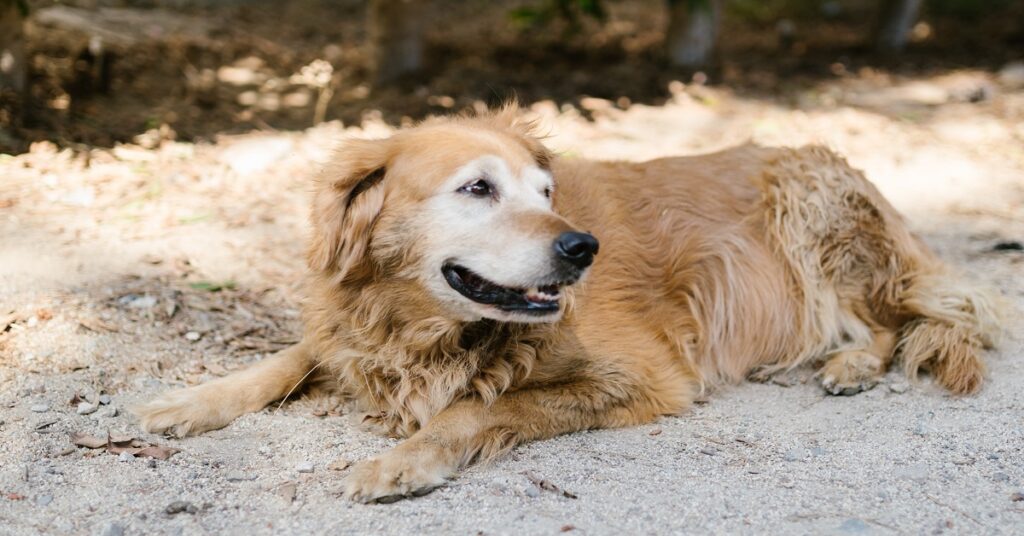Golden retrievers are ironically both the most friendly dog breeds and hard to handle due to their highly energetic nature. However, this doesn’t make them a wrong choice for owners looking for a good, fun time with a happy dog.
For a breeder, it is crucial to know how many puppies a golden retriever can have at a time. Therefore, this article will deal with the topic of “how many puppies does a golden retriever have” and explain some of the essential details regarding golden retrievers.
How many puppies does a golden retriever have?
Most litter depends on the dog’s size; a small dog breed may only have around 1 or 4 pups a litter, and medium or bigger sizes may have ten or more pups. Usually, a golden retriever can have around 4-12 puppies. However, their starting litter will be smaller than later if a breeder intends to breed golden retriever puppies regularly.
How many puppies does a golden retriever have? The litter size depends on the dog and size. The average size of a golden retriever litter is around eight puppies, the most prominent being 17. Breeding a golden retriever for puppies after their second or third cycle is recommended.
However, it can be necessary for a dog breeder to have the golden retriever mate and give birth after long intervals. A rapid succession of litter birth may significantly weaken the golden retriever and even cause death.
Generally, the gestation period for a pregnant retriever is around 63 days, during which one must ensure that the golden retriever’s diet includes sufficient nutrition for a healthy litter.
How many puppies can a dog have in their first litter?
Generally, dogs in their starting litter can have around 1-4 pups, although this may vary from dog to dog. But in cases of even larger dog breeds, the amount may be small if other factors are at play, such as nutrition or specific malformations of the body.
Otherwise, you can expect a medium-large breed dog to have at least a few pups in their first litter. Although, as stated above, factors such as the heat cycle (estrus stage) may also play a crucial role as getting the dog to mate on their first cycle may cause complications.
A golden retriever is generally recommended to have around 1-4 pups during their first litter, as too much might be far too strenuous for their bodies and even cause fatal consequences for them.
Can a golden retriever only have one puppy?
While a golden retriever generally gives birth to about 4-15 pups a litter, some rare cases may involve a golden retriever giving birth to a single puppy only, which may also be called a singleton puppy. This situation may cause problems for both the parent and the child, as there will be little to no socialization for the puppy except with the parent.
Otherwise, a golden retriever can have a maximum of 17 pups a litter without much problem aside from complications during the birth of such a large litter.
What to do if a puppy dies at birth?
In some cases, a puppy may die at birth in a litter. It will be essential to bring the dead puppy in a leak-proof container and consult with the animal vet about their burial. In a situation like this, it is crucial to let the parent golden retriever spend some time with the dead puppy before truly taking them away.
Generally, it is vital to have the golden retriever and the dead puppy diagnosed by the vet to assess the causes of the death of the golden retriever puppy.
Check this article to learn how much a Golden Retriever weight
How many times can a Golden Retriever get pregnant?
A golden retriever can have as many as 10 litres in a lifetime. However, it can be essential to try and stay within that amount as the strain of birthing a litter can have devastating consequences for the golden litter in the long run. Therefore, the best practice is 4-6 litres a lifetime for a dog rather than 10 litres per dog.
In short, getting a female golden retriever spayed after 4-6 litters is the best choice to ensure that they remain healthy and robust without becoming weak from the experience of constant mating and birthing.
Conclusion
A dog breeder who can understand their golden retriever’s emotional well-being will have a greater understanding of how they may breed the golden retriever just effectively to create a healthy litter while ensuring that the golden retriever also remains excited and energetic for future work.
It is also recommended to screen the golden retriever for diseases before getting them from a breeder and ensure that the breeder itself is reputable and has produced good dog breeds before getting a puppy from them to raise and use for breeding in later life.
Common Frequently Asked Questions
How many puppies can a golden retriever have in one litter?
The number of puppies a golden retriever can have in one litter can range from 6 to 12, with an average of 8-10 puppies. The litter size can depend on various factors, such as the mother’s age, health, and size.
What is the average litter size for golden retrievers?
The average litter size for golden retrievers is typically between six to eight puppies. However, it can range from as few as three to as many as twelve, depending on various factors such as the age and health of the dam.
Can the number of puppies in a golden retriever’s litter vary?
Genetics, age, health, and nutrition can impact the number of puppies a golden retriever may have in one litter. Litter sizes can vary greatly, even in dogs of the same breed and age.
Are there any factors that can affect the number of puppies in a golden retriever’s litter?
The number of puppies in a golden retriever’s litter can be affected by factors such as the mother’s age and health, the litter’s size, and genetics. Other factors, such as nutrition and stress, can also play a role in determining the number of puppies in a litter. Understanding these factors can help breeders and owners ensure a healthy and prosperous litter.
How does it impact the mother and puppies’ health in large litters?
A large litter can strain the mother’s physical resources and increase the risk of health problems for both her and the puppies. It’s essential to monitor the health of the mother and puppies in a large litter and provide them with appropriate care.






